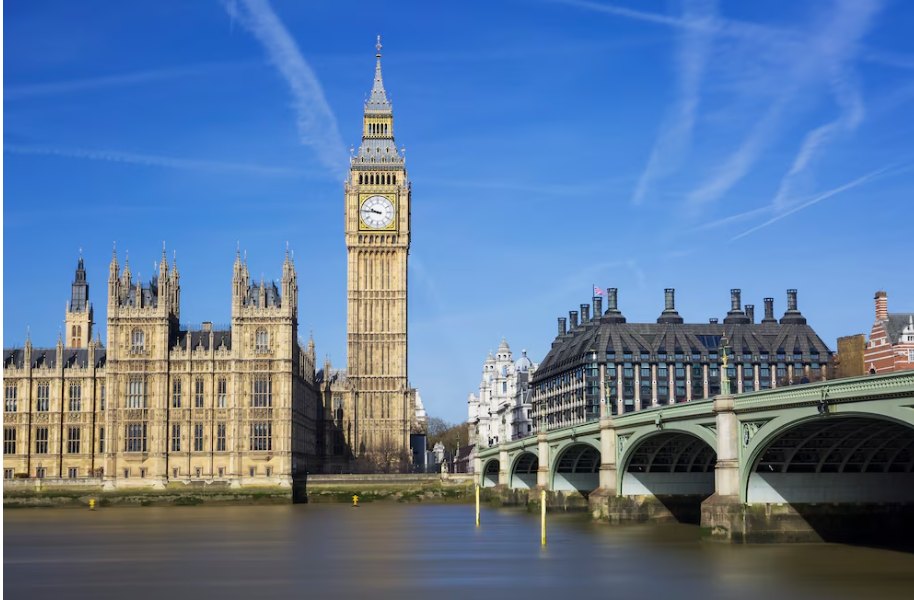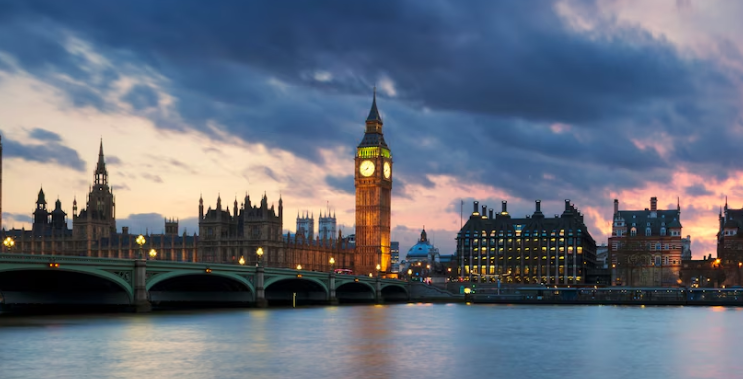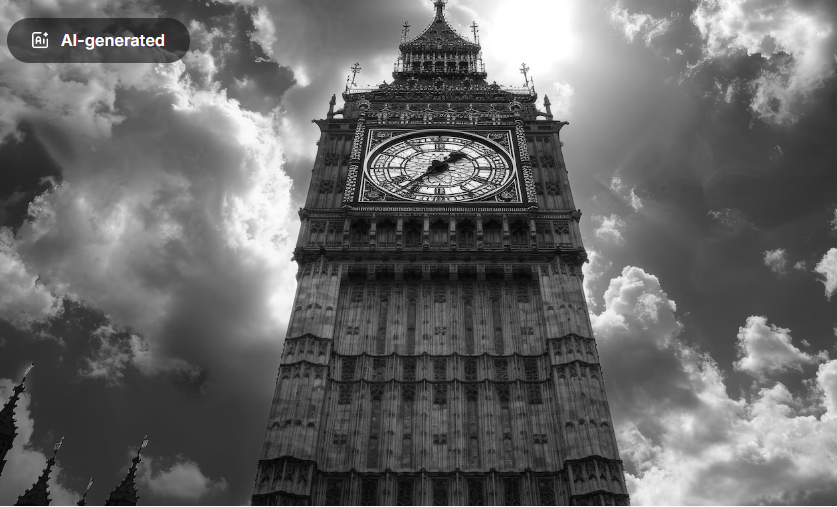Big Ben London – Story & Facts
Big Ben London – Story & Facts – London, a city brimming with history, culture, and iconic landmarks, is home to one of the most recognizable structures in the world—Big Ben.
Often associated with the clock tower, Big Ben has become a symbol of both London and the United Kingdom. However, there is more to this grand monument than meets the eye. In this article, we’ll explore the facts and story behind Big Ben, from its architectural grandeur to the history that shaped it.
What Is Big Ben?

While many assume that Big Ben refers to the clock tower itself, Big Ben is actually the nickname of the massive bell housed inside the tower. The structure was originally named the Clock Tower, but it was renamed Elizabeth Tower in 2012 to honor Queen Elizabeth II’s Diamond Jubilee. The name “Big Ben” is a popular, yet informal, term used to refer to both the bell and the clock tower, even though technically it pertains only to the bell.
The Construction of Big Ben
The construction of Big Ben was part of the rebuilding of the Palace of Westminster after a devastating fire in 1834. The design of the tower and clock was led by architect Charles Barry, with the help of Augustus Pugin, who added the gothic design elements. The construction of the tower took place between 1843 and 1859, with the clock beginning to operate in May 1859. However, the bell itself wasn’t fully functional until July 1859 due to a series of issues.
Who Designed Big Ben?
Although Charles Barry was the principal architect for the Palace of Westminster, the clock tower’s intricate design was heavily influenced by Augustus Pugin, a renowned Gothic Revival architect. Pugin was responsible for designing the tower’s ornate details, including its spire and clock face. Tragically, Pugin fell ill and died before the clock began ticking, never seeing his masterpiece completed.
Why Is It Called Big Ben?
The exact reason behind the name “Big Ben” remains unclear. There are two prevailing theories about its origin:
- Some believe the bell was named after Sir Benjamin Hall, a large man who oversaw the installation of the bell.
- Others attribute the name to Benjamin Caunt, a famous heavyweight boxer from the mid-19th century.
Regardless of which theory holds the truth, the nickname stuck, and today, “Big Ben” is known worldwide.
The Famous Bell
At the heart of Big Ben’s fame is its bell, which weighs a whopping 13.7 tons. Cast in 1858 at the Whitechapel Bell Foundry, the bell is made of an alloy of copper and tin. After an unfortunate crack appeared shortly after its first chime, the bell was repaired and rotated to avoid further damage. Since then, Big Ben has rung out the hours almost continuously, except during major repairs or restorations.
The Clock Mechanism
The clock that powers Big Ben is an incredible feat of engineering. It was designed by Edmund Beckett Denison, a lawyer and horologist, in collaboration with George Airy, the Astronomer Royal. The clock is famous for its accuracy, despite its age. It features a pendulum that weighs 300 kilograms and measures 4 meters in length, controlling the time with remarkable precision. The clock’s dials, each 7 meters in diameter, are crafted from opal glass, and the clock hands measure 2.7 meters for the minute hand and 4.2 meters for the hour hand.

Fun Facts About Big Ben
Here are some interesting facts that showcase the history and significance of Big Ben:
- Height: Big Ben stands at 96 meters (315 feet) tall, making it one of the tallest clock towers in the world.
- Chiming History: Big Ben has been chiming the hour for over 160 years, and its distinctive sound can be heard up to 5 miles away.
- Clock Accuracy: Despite its age, Big Ben’s clock is still one of the most accurate in the world. The clock mechanism even allows for adjustments by adding or removing pennies to the pendulum.
- The Great Bell: The bell chimes every hour, with smaller bells chiming at every quarter-hour. The Great Bell, Big Ben itself, sounds the famous note E.
- Survived WWII: The clock tower survived bombing during World War II, although some of the surrounding structures were damaged.
- Restorations: Big Ben underwent a major renovation between 2017 and 2022, which saw the entire clock tower cleaned, repaired, and restored.
Big Ben and British Culture
Throughout its history, Big Ben has become a symbol of British culture and identity. Its chimes are broadcast globally on New Year’s Eve, and its silhouette is instantly recognizable as a representation of London. For tourists, a visit to Big Ben is a must, as it holds a deep connection to British history, governance, and architecture.
Big Ben is also a central figure in many cultural moments, appearing in literature, film, and art. Its image has been featured on everything from postcards to movies, making it an enduring cultural icon.
The Recent Renovations
In 2017, Big Ben underwent a major renovation project aimed at preserving the tower for future generations. The repairs included:
- Restoration of the stonework, clock face, and metalwork
- A new paint job to return the tower to its original colors
- Repairing the clock mechanism to maintain its accuracy
- Upgrading the tower with modern fire safety and accessibility features
The renovations took five years to complete and cost approximately £80 million. Throughout most of the project, the bell remained silent, except for important occasions like New Year’s Eve and Remembrance Sunday.

How to Visit Big Ben
While Big Ben and the Houses of Parliament are still working government buildings, visitors can admire the exterior of the tower from various viewpoints around London. Unfortunately, tours inside the clock tower are only available to UK residents, who must arrange their visits through their Member of Parliament. However, tourists can still visit the adjacent Parliament Square and Westminster Abbey, which offer incredible views of the tower.
For those interested in seeing Big Ben’s bell in action, the chimes can still be heard from the surrounding area every hour. The newly restored tower stands as a testament to London’s rich history and architectural brilliance.
Conclusion
Big Ben is far more than just a clock tower—it is a symbol of London, a marvel of engineering, and a piece of British history that continues to capture the imagination of people around the world. From its towering height to the fascinating stories behind its construction and iconic bell, Big Ben remains one of the most beloved landmarks on the planet. Whether you’re a history enthusiast, a traveler, or simply someone who admires beautiful architecture, Big Ben stands as a must-see on any visit to London.
Share this content:














4 comments